Updates
How IFAW has helped animals and people during the Ukraine crisis
Learn moreAnimals with the strongest bite: 9 jaw-dropping mammals, sharks, and reptiles
From sharks to alligators to bears, there are a variety of animals on our planet with dangerously sharp teeth and powerful jaws. Some animals you might not expect to make this list, like gorillas, which primarily eat plants, but others are renowned predators, like jaguars.
Measuring the bite force of an animal is no easy feat, and while some of these numbers have been recorded in scientific studies, others are estimates or have only been recorded once. Regardless, all these animals have extremely powerful biting capabilities.
There are a few different ways in which an animal’s bite strength can be determined. Some studies measure force, others measure pressure (the amount of force applied over a certain area), and some take into account body mass in proportion to force. While Tasmanian devils don’t make the top 10 list for strongest bite, they do have one of the strongest bites in proportion to their small size.
Here are nine of the animals with the most powerful bites in the world and their estimated strength.

Also known as the laughing hyena, the spotted hyena (Crocuta crocuta) has the strongrest-recorded bite of all carnivorous mammals—4,500 Newtons or 1,011 pounds of force. Native to sub-Saharan Africa, these hyenas are predators, not scavengers like other hyenas. They use their incredibly strong jaws to eat animals like zebras and wildebeests.
Sprinting at speeds of up to 60 kilometres per hour (37 miles per hour), spotted hyenas often chase their prey over long distances. They’re better at hunting when they’re bigger in numbers—these highly social animals are capable of chasing lions away from their prey if they are in a large enough group.
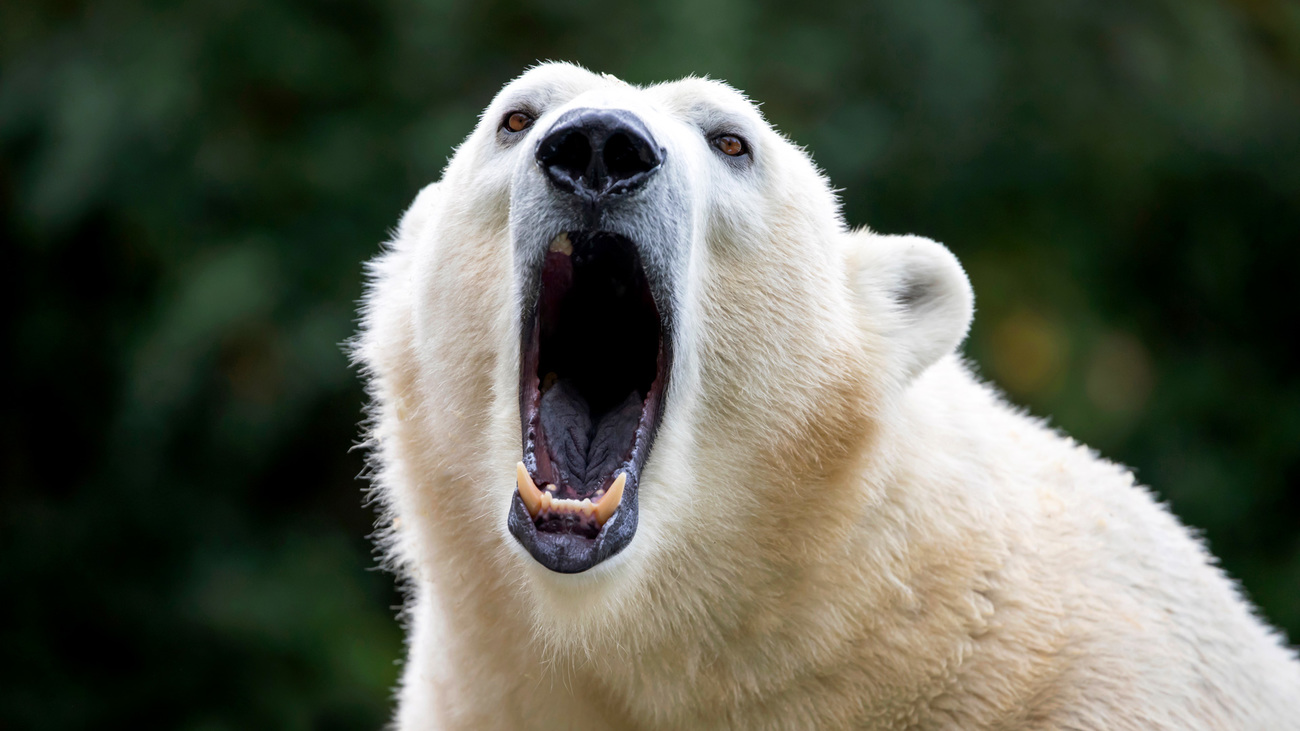
Polar bears (Ursus maritimus) are estimated to have the strongest bite of any bear. As the largest species of bear and the most carnivorous, polar bears primarily hunt seals but can also take down even larger prey, like walruses, narwhals, and belugas.
One study found the typical polar bear bite force to reach up to 5,000 Newtons (up to 1,120 pounds of force), and they can bite even harder than their brown bear cousins.
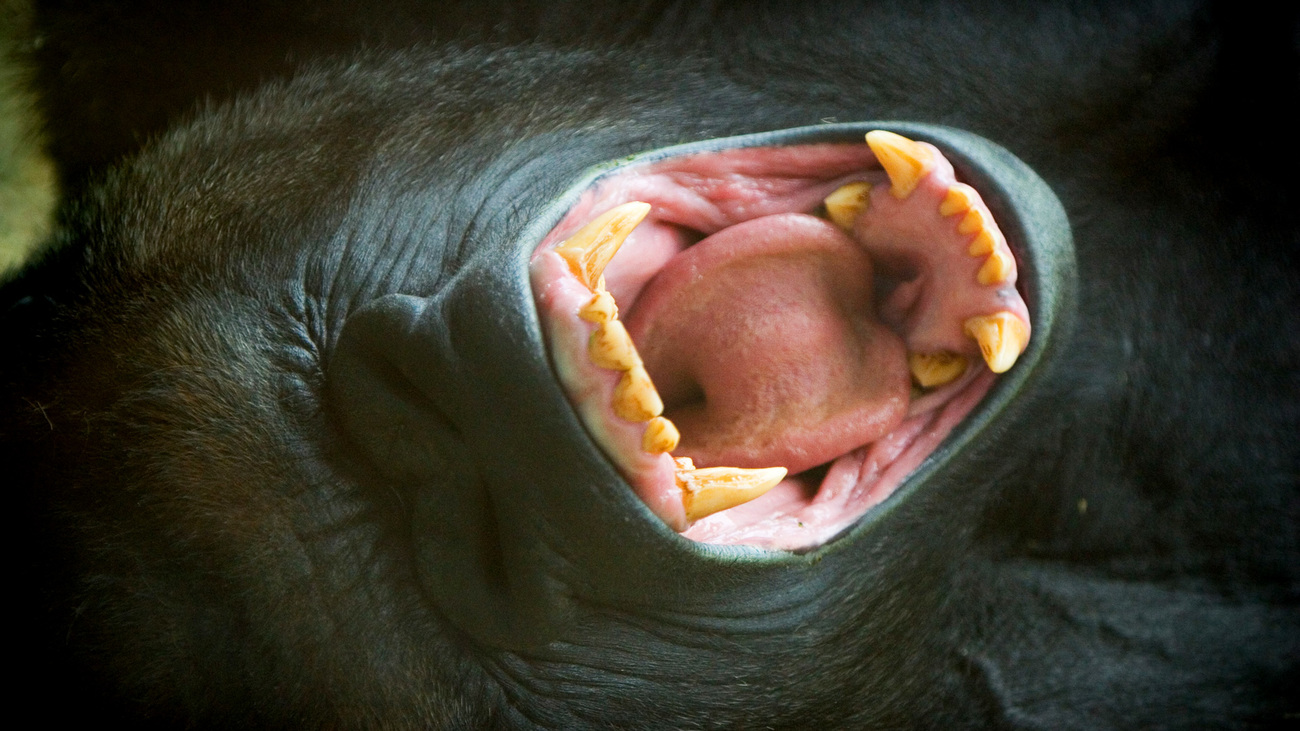
Despite being mainly herbivorous, gorillas (genus Gorilla) have one of the strongest bites—the strongest of all primates. The bite force of the Western gorilla (Gorilla gorilla) was calculated by one study to be about 3,420 Newtons. Despite sharing 98.3% of their DNA with humans, they’re estimated to be over 10 times stronger than us in general.
You might notice that despite being plant-eaters, gorillas’ teeth aren’t all flat molars. They have sharp, long canine teeth and incisors, which help them eat bark off trees and consume other tough plants.
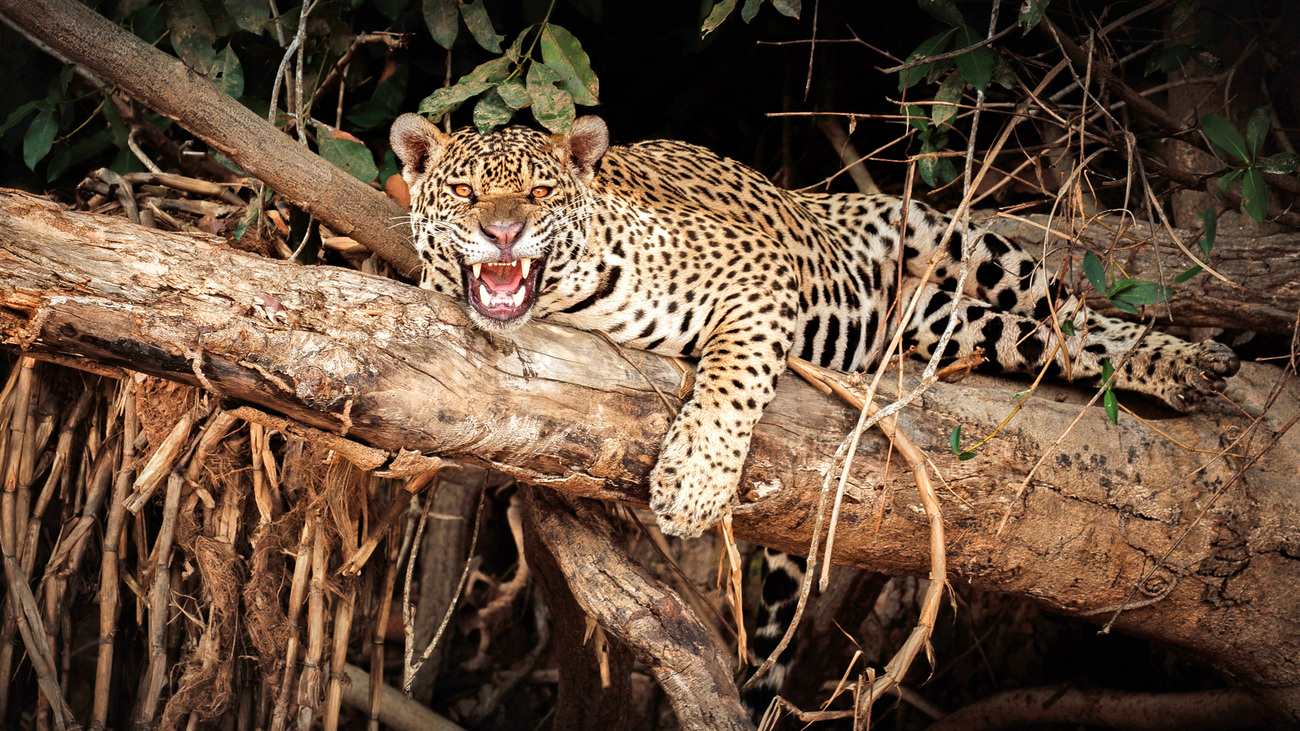
Jaguars (Panthera onca) have one of the strongest bites of all big cats, especially relative to its body size. Their bite has been measured to reach 1,254 Newtons. Their jaws and canine teeth are strong enough to pierce the skulls of their prey, which include small mammals, deer, caimans, turtles, birds, small reptiles, and fish.
Jaguars also have a high bite force quotient, meaning their bite is strong in relation to their body size. At 137, their bite force quotient is roughly equal to that of wolves, clouded leopards, and eastern quolls (a small carnivorous marsupial). It’s higher than that of bears, hyenas, and tigers.
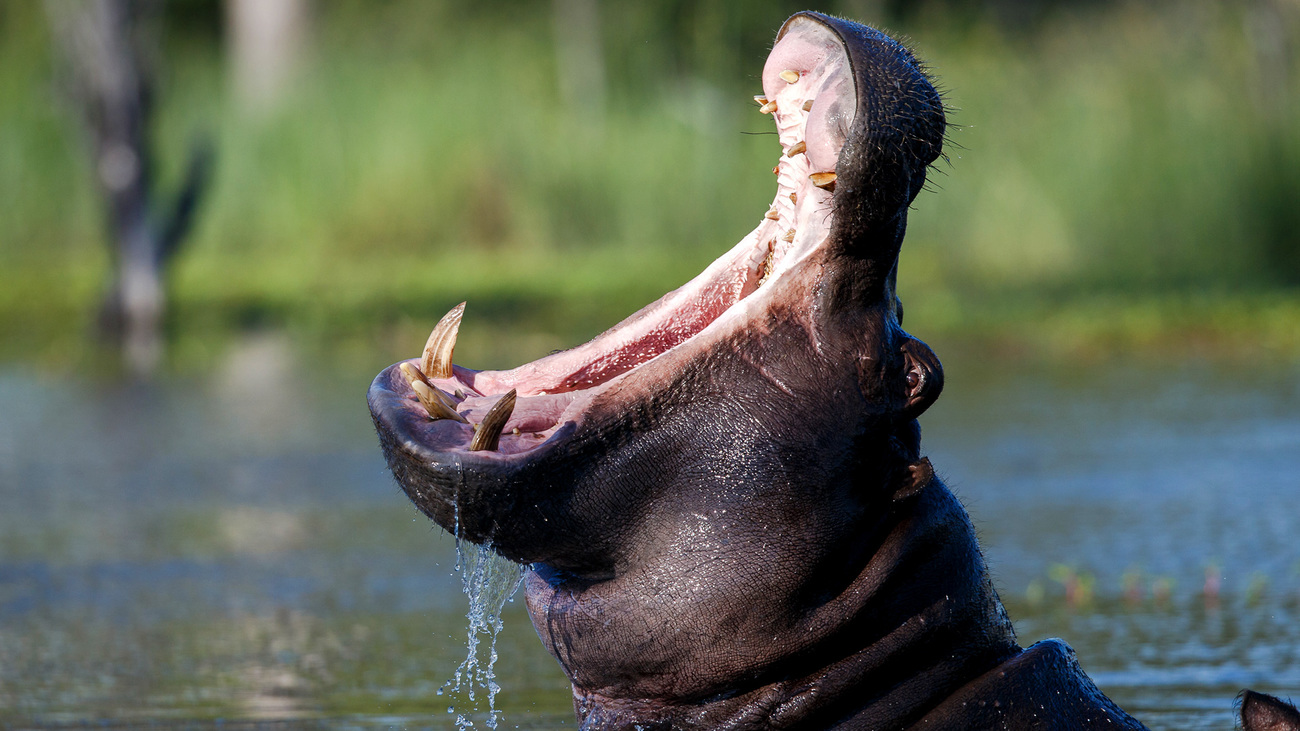
The hippopotamus (Hippopotamus amphibious) is said to have the strongest bite of all land animals at about 8,130 Newtons per square inch. They are herbivores, but if disturbed by humans, they can be very dangerous and cause fatal injuries. They also have been known to show aggression towards lions and crocodiles, and they have no trouble besting these apex predators with their bite. Otherwise, they live quite sedentary lifestyles, wallowing in rivers, lakes, and mangroves and eating up to 110 pounds of grass per day.
Hippos’ canine teeth can grow up to 50 centimetres (20 inches) long. Unfortunately, they are a highly sought-after source of ivory. Hippos are often poached for their teeth.
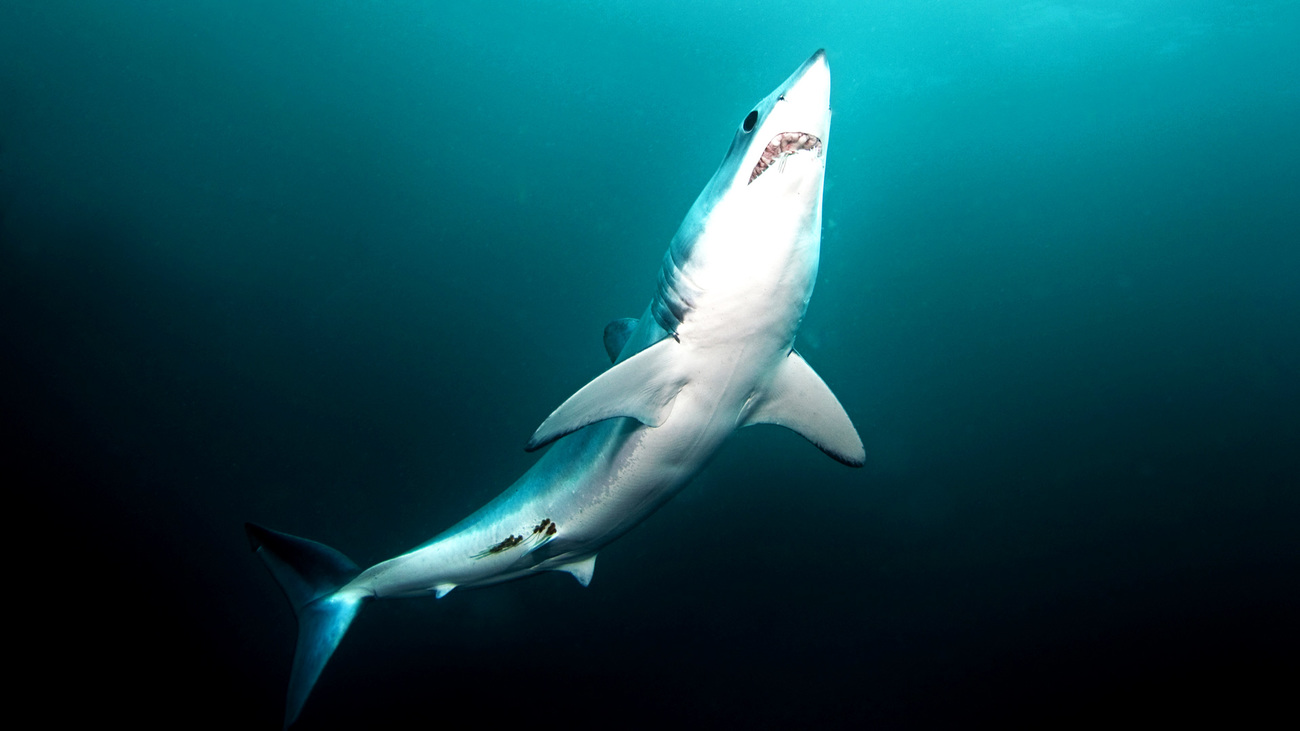
The shortfin mako (Isurus oxyrinchus) is an endangered shark species found in temperate and tropical waters. In 2020, scientists built a custom device to measure the bite strength of a shortfin mako, and they used it to measure the bite of an individual near New Zealand. The result was the most powerful shark bite ever recorded at 13,000 Newtons (3,000 pounds of force).
However, this was just one bite of one individual shortfin mako. It’s very possible that, as a species, great white sharks have a stronger average bite. Still, at an average of 1.8 to 2.1 metres (6 to 7 feet) long, shortfin makos are much smaller than great whites, which are typically 4.5 metres (15 feet) long—their smaller size makes their strong bite all the more impressive.
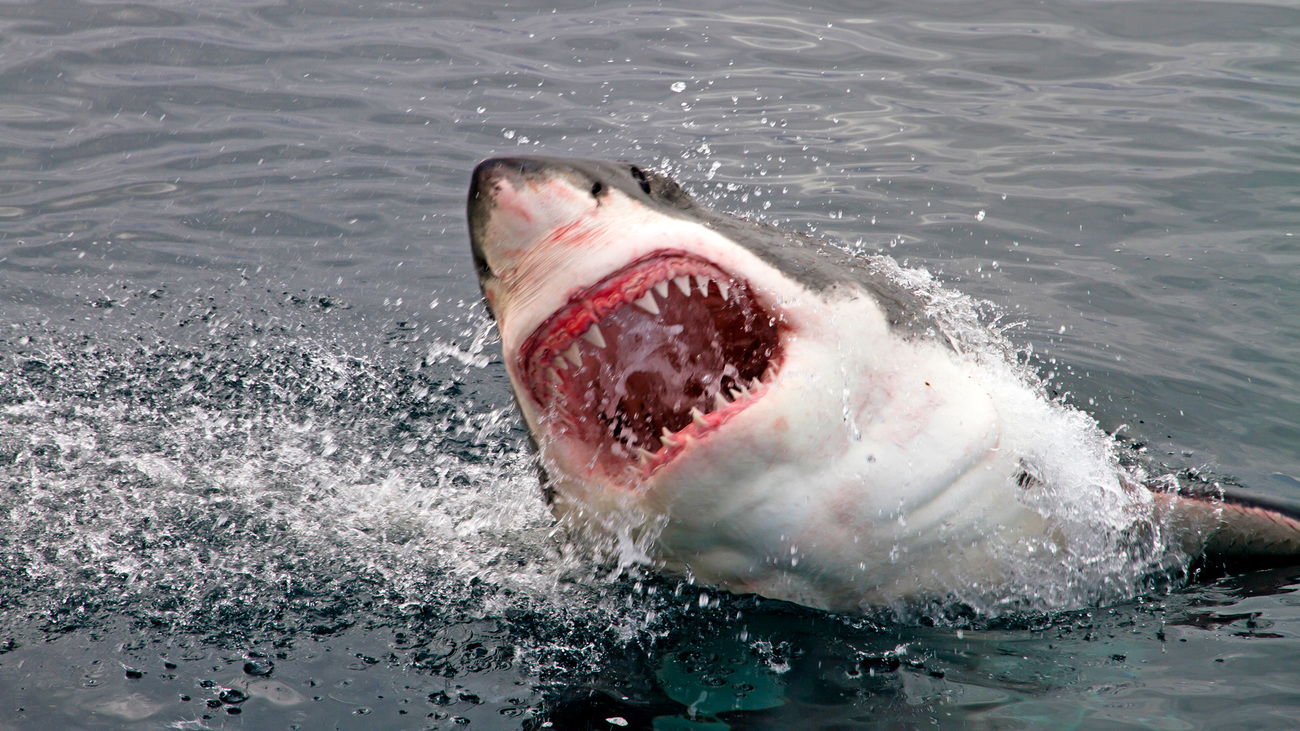
The bite force of a great white shark (Carcharodon carcharias) hasn’t been measured with a device like the shortfin mako’s. Feared as the most dangerous shark in the world, research suggests that its bite is likely the strongest of all shark species. One study digitally reconstructed the jaws of a great white shark and found that its bite force may exceed 18,000 Newtons (4,000 pounds of force). However, it hasn’t been measured in real life, so it’s possible that this shark outranked by the American alligator and saltwater crocodile.
The great white shark also couldn’t out-bite its extinct prehistoric relative, the megalodon—which may have had a bite force of 10 times as powerful.
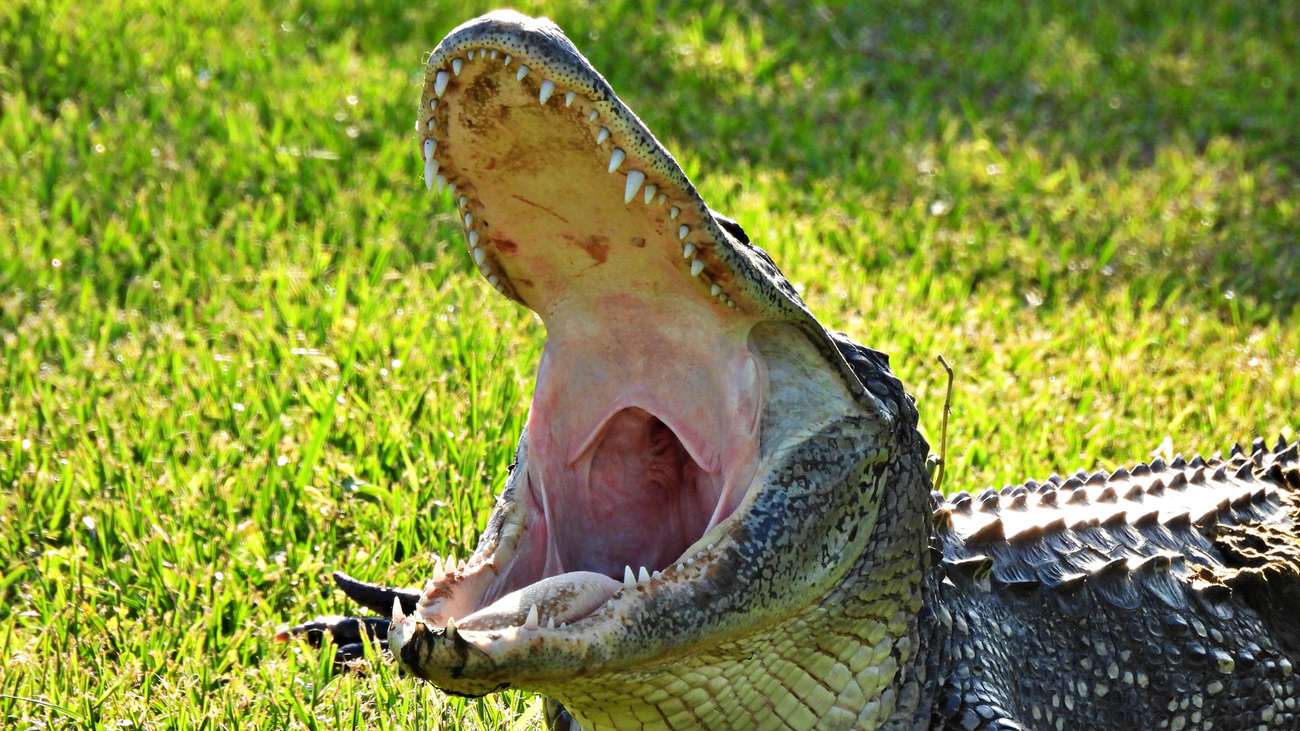
Two of the most powerful bites in the animal kingdom come from reptiles. One is the American alligator (Alligator mississippiensis), which can exhibit 13,172 Newtons of force (about 3,000 pounds of force) with its jaws. Despite its strong bite force, its jaw muscles are relatively weak. A human can hold its jaws closed with a hand or even a strong rubber band. At the time of the study in 2006, 13,172 Newtons was the highest recorded bite force of any living animal.
The American alligator can be found in the US Southeast, and its diet consists of fish, birds, frogs, small mammals, and invertebrates like snails.
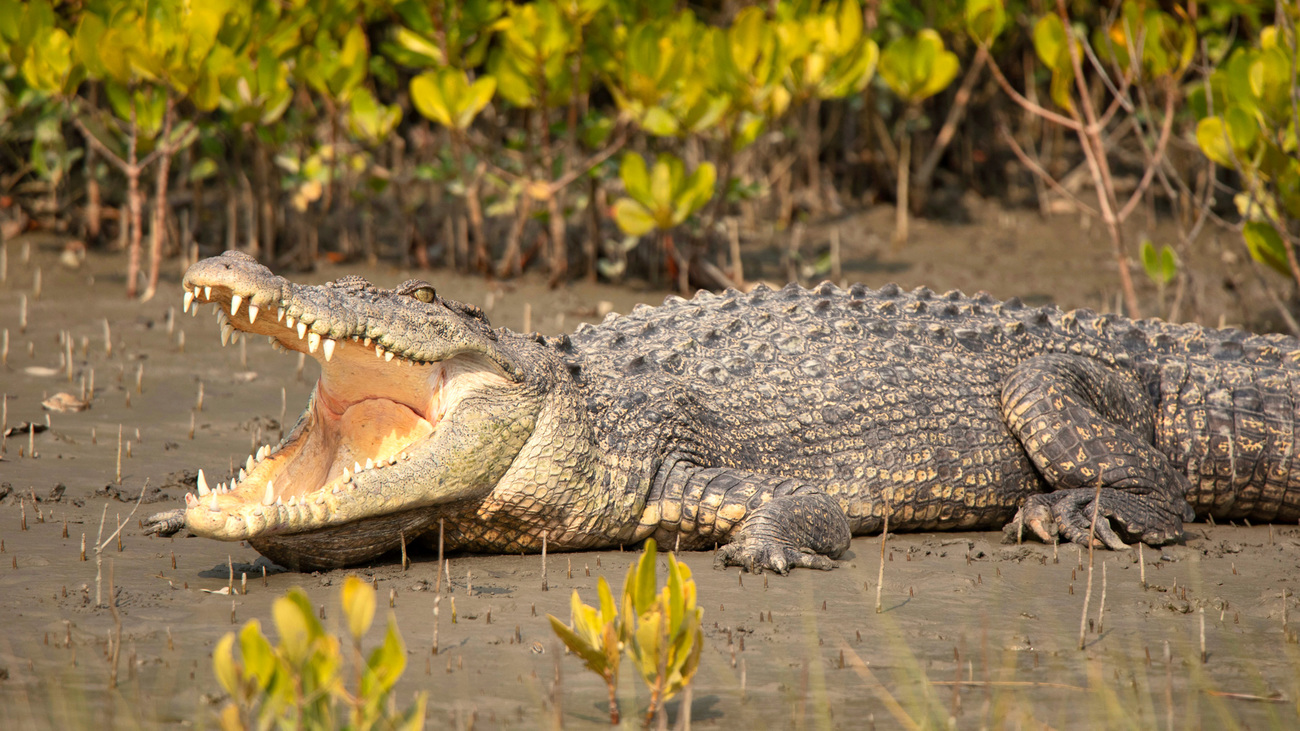
The saltwater crocodile (Crocodylus porosus) is often heralded as the animal with the strongest bite on Earth. In a 2012 study, the bite of one individual was recorded at 16,414 Newtons or 3,689 pounds of force—making it the strongest recorded bite of any individual animal.
The saltwater crocodile is found in saltwater habitats, wetlands, and freshwater rivers spanning from India’s eastern coast, across Southeast Asia, and down to Australia’s northern coast. Its teeth aren’t used much for chewing—this crocodile tends to swallow its prey whole. The saltwater crocodile preys on fish, sharks, invertebrates, amphibians, birds, reptiles, and mammals—it isn’t a picky eater. They’ve even been known to prey on humans in India and Indonesia.
Our work can’t get done without you. Please give what you can to help animals thrive.
Unfortunately, the browser you use is outdated and does not allow you to display the site correctly. Please install any of the modern browsers, for example:
Google Chrome Firefox Safari